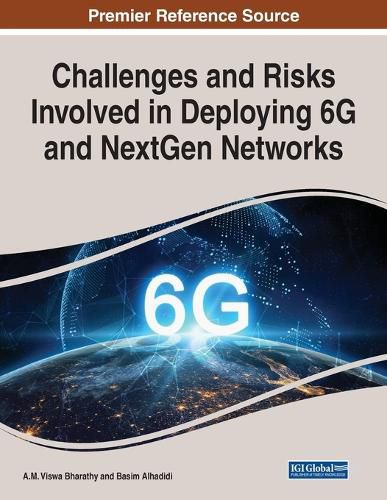Readings Newsletter
Become a Readings Member to make your shopping experience even easier.
Sign in or sign up for free!
You’re not far away from qualifying for FREE standard shipping within Australia
You’ve qualified for FREE standard shipping within Australia
The cart is loading…






This title is printed to order. This book may have been self-published. If so, we cannot guarantee the quality of the content. In the main most books will have gone through the editing process however some may not. We therefore suggest that you be aware of this before ordering this book. If in doubt check either the author or publisher’s details as we are unable to accept any returns unless they are faulty. Please contact us if you have any questions.
There is a need to be aware of the challenges awaiting us in next generation (NextGen) networks in order to take the proper steps to either minimize or eliminate issues as they present themselves. Incorporating artificial intelligence in NextGen networks for privacy and security policies will serve this purpose. It is essential to stay current with these emerging technologies and applications in order to maintain safe and secure communications in the future. Challenges and Risks Involved in Deploying 6G and NextGen Networks explores strategies for the design and deployment of more secured and user-centered NextGen networks through artificial intelligence to enrich user experience. It further investigates the political, social, and geographical challenges involved in realizing these 6G networks and explores ways to improve the security of future potential applications as well as protect user data from illegal access. Covering topics such as deep learning algorithms, aerial network communication, and edge computing, this major reference work is an indispensable resource for regulatory and policy groups, associations and technology groups, government and international bodies, technology executives and technical institutions, management consulting and advisory firms, communication engineers, network engineers, students and educators of higher education, researchers, and academicians.
$9.00 standard shipping within Australia
FREE standard shipping within Australia for orders over $100.00
Express & International shipping calculated at checkout
Stock availability can be subject to change without notice. We recommend calling the shop or contacting our online team to check availability of low stock items. Please see our Shopping Online page for more details.
This title is printed to order. This book may have been self-published. If so, we cannot guarantee the quality of the content. In the main most books will have gone through the editing process however some may not. We therefore suggest that you be aware of this before ordering this book. If in doubt check either the author or publisher’s details as we are unable to accept any returns unless they are faulty. Please contact us if you have any questions.
There is a need to be aware of the challenges awaiting us in next generation (NextGen) networks in order to take the proper steps to either minimize or eliminate issues as they present themselves. Incorporating artificial intelligence in NextGen networks for privacy and security policies will serve this purpose. It is essential to stay current with these emerging technologies and applications in order to maintain safe and secure communications in the future. Challenges and Risks Involved in Deploying 6G and NextGen Networks explores strategies for the design and deployment of more secured and user-centered NextGen networks through artificial intelligence to enrich user experience. It further investigates the political, social, and geographical challenges involved in realizing these 6G networks and explores ways to improve the security of future potential applications as well as protect user data from illegal access. Covering topics such as deep learning algorithms, aerial network communication, and edge computing, this major reference work is an indispensable resource for regulatory and policy groups, associations and technology groups, government and international bodies, technology executives and technical institutions, management consulting and advisory firms, communication engineers, network engineers, students and educators of higher education, researchers, and academicians.